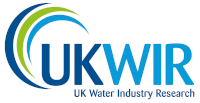BQ11 - How do we embed and maximise a sustainable circular economy within the water sector by 2050?
We are currently working on the approach to answering this Big Question, and more information will be given here soon. The areas that this Big Question covers includes: Once we understand where the gaps are, we will produce a route map – this is a plan as to how we will answer our Big Question. The route map will have a number of key elements. At the top will be our Big Question and then we will look to see what Outcomes we need from the research programme -if we can achieve all these outcomes we can answer the Big Question. This is the stage we are currently at for this Big Question. The next stage will be to think about the key benefits we want the research projects to deliver to meet these outcomes. Following this, we will plan the research projects to help deliver the benefits. UKWIR – the UK and Irish water industry’s research body – has commissioned the first study of its kind in the UK to develop a robust approach to sampling and detection of microplastic particles in the treated water cycle. This included accurately measuring the presence of microplastic particles in potable (drinking) water, treated wastewater and in the solid residues (sludge) produced by both the water and wastewater treatment processes. Please click here to view more information.
RESEARCH Outcomes
Water sector waste regulation is underpinned by the circular economy, and producer responsibility / controls at source are fully effective View key benefits and filter projects by this outcome key benefits Ability to influence to ensure the need for controls at source is understood; and that controls are implemented. An evidence base that enables positive regulatory alignment to the objectives of the circular economy. Understand what a circular economy water industry looks like and overcome regulatory barriers. |
Technologies are available to enable all waste streams to be cost effectively recycled and resources recovered View key benefits and filter projects by this outcome key benefits Informing the most effective deployment of emerging technologies & methods The value of resources and the practicalities of recovery opportunities are clear |
We minimise use of finite resources and the use of recycled products is maximised View key benefits and filter projects by this outcome key benefits Ability to identify, maximise the benefits and the use of recycled resources as part of all water industry activities (including water and wastewater operations and capital delivery). Knowledge of the merits of efficient and effective recovery of waste into product that are marketable |
Resource use and recycling approaches drive social, environmental and economic capital gain for society View key benefits and filter projects by this outcome key benefits An ability to identify sustainable markets for resource use |
Ownership and responsibility for resources management is clear and all play a partnership role in driving resource efficiency View key benefits and filter projects by this outcome key benefits Ability identify and to communicate opportunities to our customers', stakeholders and regulators, which enhance resource efficiency and promotes benefits. Amount of waste generated is minimised. Understand and record our resource and waste streams |
The economic and regulatory frameworks effectively support and incentivize resource recovery and reuse in the water sector View key benefits and filter projects by this outcome key benefits Ability to make procurement and investment choices based on zero waste ambition / circular economy objectives An evidence base to support an investment approach that enhances resource recovery and reuse; and that enables positive regulatory alignment to the objectives of the circular economy We know what is of value and everything of value is recovered |
See All Projects
Projects
| Response to National Bioresources Strategy - prioritisation of opportunities. Project Status - Project Commenced Category - Sludge & Waste Management The National Bioresources Strategy identifies key areas of R&D off the back of the strategy. One key recommendation for R&D is the prioritisation of recovered resources and understanding the scalability and market requirements. |
| What does a circular economy water industry look like? (BQ11 Pathfinder Project). Project Status - Project Completed |
| Where is the greatest sustainable economic benefit for resource recovery in the water cycle?. Project Status - Project Completed |
| Circular economy - water treatment sludges. Project Status - Project Commenced Category - Sludge & Waste Management As water treatment process intensify to meet new standards in the face of deteriorating raw water quality, including the need to install clarification process at existing works, the volume of waste sludge is likely to increase, and so is the demand for chemicals (such as coagulants). This issue is compounded by diminishing outlet opportunity, with traditional routes such as land restoration at landfill sites reducing and recycling to agriculture becoming less reliable due to changes in regulations (WINEP / Farming Rules for Water). Alternative outlets, such as incineration, are increasingly unpalatable given the sectors Net Zero ambitions. Given the likely increase in water sludges produced, the reducing opportunities to recycle, and the forecast increase in demand for chemicals such as coagulants there is a need to identify alternative uses / outlets for water treatment sludges. This needs to include external markets, but also resource recovery, either for direct re-use in the treatment assets or to reduce demand from other sectors. Note - This project is limited in scope to the circularity of sludge reuse. A separate proposal has been drafted that investigates the possible impacts of contaminants (PFAS) in water sludges as to their likely future use and long-term viability of a circular economy of water sludges. |
RESEARCH IMPACT - CASE STUDIES |
